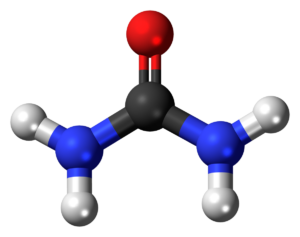Urea Hydrolysis And Ammonia Uptake by Bacillus Pasteurii
Bacillus pasteurii (BP) is a ureolytic, non-pathogenic organism. We evaluated the hydrolysis of urea and liberation ammonia in artificial intestinal fluid (AIF). 109 CFU of BP was added to three flasks containing 100mL AIF fortified with 1000ppm urea. Two flasks were sealed and placed in a water bath at 37 degrees C and shaken at 100rpm. A calibrated ammonia ion-selective electrode was placed into a third flask to monitor ammonia. A fourth was used to determine the proliferation of BP. A fifth flask containing no inoculum was used as a control. Within two hours, 87% of the urea was hydrolyzed by bacterial urease.
During this same period, the cell count increased by approximately 46% and the ammonia concentration rose to 0.4ppm from a baseline value of 0.05ppm. Within two to four hours, urea hydrolysis decreases to 31%, the growth of the inoculum remains unchanged and the ammonia concentration is reduced by greater than 50%. After eight hours approximately 1% of the urea remains and the ammonia concentration has leveled out at 0.3ppm. This study demonstrates that BP is an excellent candidate for use in a biopharmaceutical product to mitigate in vivo urea without a significant increase of free ammonia as it is mostly consumed by the organism for growth purposes.
Our synbiotic product will exploit the above properties and augment the kidney toxin elimination functions.
N. Ranganathan, A. Macherone, B. Patel R. Mehta, J. Marczely, J. Dickstein.
Kibow Biotech, Inc. Philadelphia, USA.
10th International Congress on Nutrition and Metabolism in Renal Disease – poster #P-19



